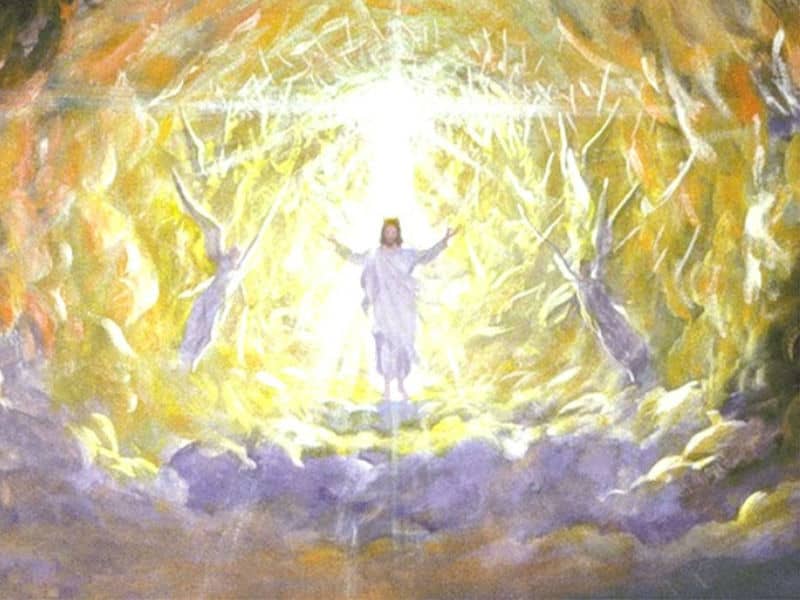When the 1893 Columbian Exposition was held in Chicago, the most popular auxiliary meeting was a 17-day congress on world religions. Hindu and Buddhist teachers gave North America its first major exposure to Eastern beliefs--an event now seen as the beginning of global interreligious movements.
The event, called the Parliament of the World's Religions, drawing audiences of up to 4,000 a day, also provided unusual platforms for Catholic and Jewish speakers in the prevailing Protestant climate. From then on, the interfaith spotlight in America shown on gradual overcoming of anti-Catholicism and anti-Semitism in U.S. public life, plus steady advances in ecumenical ties among Christians.
The search for peace and understanding between all religious traditions stood in the background, pursued by tiny groups and the spiritually adventuresome. But interfaith work was being done.
By 1900, Unitarians were helping to form the International Association for Religious Freedom, the oldest interfaith body. The Fellowship of Reconciliation, started in 1915, today includes Catholic, evangelical, Buddhist, Jewish and Muslim peace affiliates. Two groups based in Oxford, England--the World Congress of Faiths and the International Interfaith Centre--have been active since the mid-1930s.
Today, a sense of urgency has surfaced to move beyond familiar Judeo-Christian concerns to relations with Muslims, Hindus, Buddhists, Sikhs, and other religious communities. The main reasons are tension brought on by migration of people of different faiths into Christian-heritage nations, and religion-related conflicts around the world. That heightened attention, religious leaders say, bodes well for the Millenium World Peace Summit of Religious and Spiritual Leaders.
"This moment is an extraordinary exclamation point for the interreligious movement," said the Rev. Charles Gibbs, executive director of the San Francisco-based United Religions Initiative, one of four new groups harnessing interfaith accord to social, environmental and justice campaigns. Here is a rundown of the four new interfaith groups:
·United Religions gave formal birth in Pittsburgh in June to grassroots Cooperation Circles of at least seven people representing three or more different religions. The 75 founding circles--in places as far-flung as Brazil and Sri Lanka--are asked "to work for the safety, happiness and welfare of all life."
·The largest and strongest interreligious organization is the World Conference on Religion and Peace International (WCRP), which first convened in Kyoto, Japan, in 1970. With 35 national chapters plus offices in New York, Geneva, Melbourne, Sarajevo and Tokyo, the organization has attracted church and foundation money for various social and peace projects. Working typically at high religious and government levels, the group played a central role last year in establishing dialogue between Sierra Leone's President Ahmad Tejan Kabbah and rebel leaders that led to a peace settlement.
Indonesia's President Abdurrahman Wahid, a former WCRP board member, reaffirmed his commitment to inter-religious peace and cooperation in June, as Muslim-Christian violence raged in his country. Jordanian Prince El Hassan bin Talal, an articulate interfaith advocate, moderated the WCRP's seventh assembly in November, 1999--a meeting of 600 leaders, including the Most Rev. George Carey, the Archbishop of Canterbury, and Sheikh Mohamed Sayyed Tantawi, a top Sunni Islam authority. The previous assembly, in 1994, was hosted by Pope John Paul II.
·The Vatican has been a player in inter-religious circles since 1964, when it established an office for dialogue with non-Christian religions. The first papal-hosted prayer gathering of world religious leaders in 1986, held at Assisi, Italy, inspired a lay Catholic group, the Community of St. Egidio, to organize annual interfaith gatherings and special mediation efforts, notably one in Mozambique eight years ago.
·A Chicago-based group, the Council for a Parliament of the World's Religions, drew 8,000 participants to a 1993 gathering in that city commemorating the historic interfaith meeting 100 years earlier. Last December in Cape Town, South Africa, the Third Parliament registered more than 7,000 people for the eight-day, non-legislative gathering. The largest event of its kind, the Parliament is distinguished by hundreds of seminars and a festive celebration of spiritual diversity.
But many said that the Parliament's social-action document, completed
before the meeting and not open to change at Cape Town, lacked teeth in urging academia, science and medicine, business, governments and other "guiding institutions" to work with organized religion in attacking social-moral problems.The Dalai Lama, addressing the 1999 Parliament's closing session, yearned for concrete solutions: "Changes only take place through action--not through prayer, not through meditation."
That sentiment was echoed by Catholic-educated William F. Vendley, secretary general of the World Conference on Religion and Peace International: "Not many people are going to pay money for religious figures simply to meet each other; they are looking for religious collaboration to yield real results."

